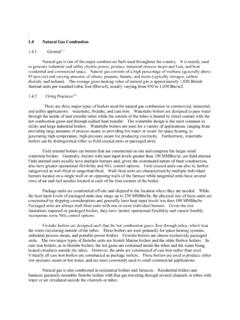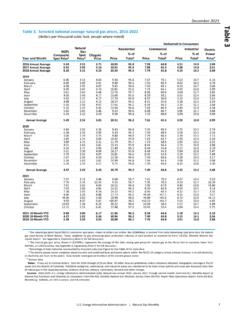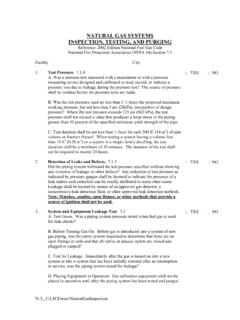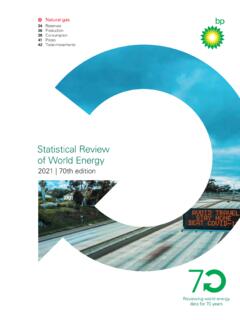Transcription of Fact sheet: Natural Gas Greenhouse Gas Emissions - Energy
1 1 of 2 Fact sheet: Natural Gas Greenhouse Gas Emissions Pipeline quality Natural gas is composed of over 90 percent methane (CH4), roughly percent1 of which is vented routinely or leaked unintentionally from various sources throughout the Natural gas supply chain. Methane is a relatively potent Greenhouse gas (GHG). Although methane has a relatively short atmospheric lifetime of 10-12 years2, when integrated over 100-years methane it is over 20 times more effective than carbon dioxide (CO2) at trapping heat in the atmosphere. In 2012, on a CO2 equivalency basis, methane contributed to roughly 9 percent of total Greenhouse gas Emissions from anthropogenic sources3, roughly a quarter of which was emitted by Natural gas systems (Figure 1). Figure 1: Methane Emissions from all Anthropogenic Sources in the Data source is the Inventory of Greenhouse Gas Emissions and Sinks: 1990-2012, Environmental Protection Agency (2014).
2 Natural gas travels through the Natural gas system from underground reservoirs, through pipelines and processing plants, before it is eventually delivered to end use consumers. The Natural gas system produces, processes, transports, stores, and distributes Natural gas. Roughly 13% of gas produced does not reach the consumer; over half of this amount is used in the system. At each stage of transport, Natural gas leaks and each type of loss or use of Natural gas throughout the system has associated GHG Emissions . Figure 2 illustrates the loses or uses from four major segments of the Natural gas supply chain, which include Natural gas used to power equipment or processes that are part of the Natural gas system, flaring, venting, or removal of impurities during processing. The Greenhouse gas Emissions from Natural gas system losses or Natural gas utilization within the Natural gas system (excluding combustion by end-users) are shown in Figure 3.
3 When global warming potential is taken into account4, CO2 and CH4 Emissions from the Natural gas system are approximately equal (~127 TgCO2e). Most of the CO2 Emissions stem from Natural gas fuel consumed by compressor units during Natural gas transport. In 2012, Natural gas used for Natural gas compression, processing and other purposes consumed over 2 Quads of 1 This is leakage rate is estimated using total methane Emissions from Natural gas systems, in 2012 (according to EPA s 2014 GHG Inventory) and gross withdrawals of Natural gas from all sources (EIA, 2014; ). 2 Accounting for direct and indirect radiative forcing effects, a molecule of methane is estimated to have an atmosphere lifetime of roughly 12 years, while a molecule of carbon dioxide can remain in the atmosphere for centuries. Source: 3 Methane is assumed to have a global warming potential (GWP) of 21 as currently used in the GHG Inventory.
4 4 The climate implications of Natural gas losses from the system depends on the GWP of the gases that are emitted to the atmosphere. Methane is assumed to have a GWP of 21 as currently used in the GHG Inventory. 2 of 2 energy5, or roughly 8 percent of total Natural gas end-use in the CH4 Emissions occur from equipment across the Natural gas supply chain that emits methane as part of normal operations and from unplanned leaks. Approximately 55% of methane Emissions from the Natural gas system are from the transmission, storage, and distribution segments. Figure 2: Volumes of Natural gas losses, including Energy use and methane Emissions , from four major segments of the Natural gas supply chain, presented in the context of end-use ( , Natural gas delivered to customers). Methane losses are derived from the EPA s GHG inventory (2014), while Energy use and other gas Emissions due to acid gas removal are from the Energy Information Administration (EIA, 2014).
5 Figure 3: GHG Emissions from Natural gas systems, presented in CO2 equivalents. Same data sources as for Figure 2. 5 Source.


















